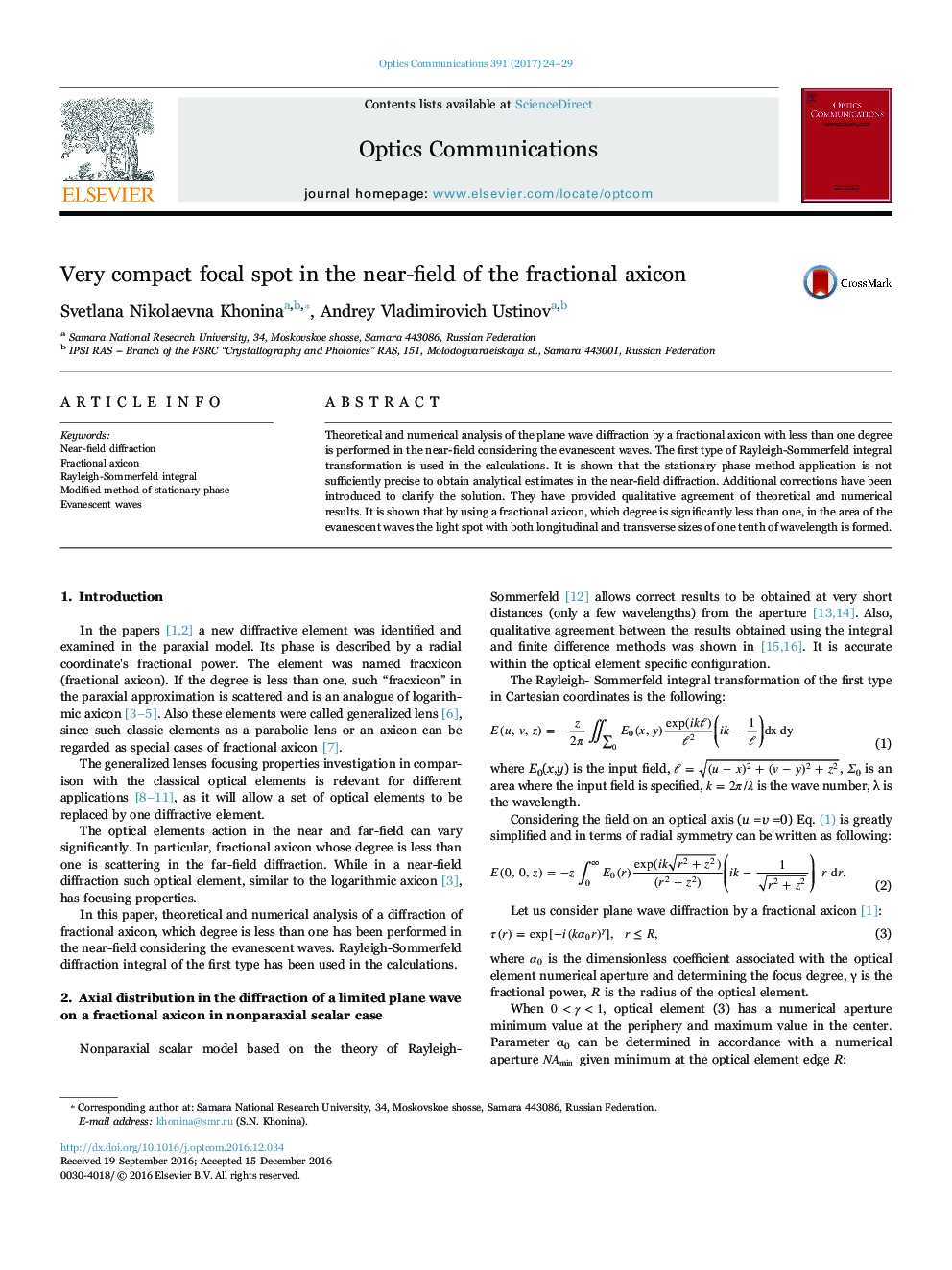| Article ID | Journal | Published Year | Pages | File Type |
|---|---|---|---|---|
| 5449496 | Optics Communications | 2017 | 6 Pages |
Abstract
Theoretical and numerical analysis of the plane wave diffraction by a fractional axicon with less than one degree is performed in the near-field considering the evanescent waves. The first type of Rayleigh-Sommerfeld integral transformation is used in the calculations. It is shown that the stationary phase method application is not sufficiently precise to obtain analytical estimates in the near-field diffraction. Additional corrections have been introduced to clarify the solution. They have provided qualitative agreement of theoretical and numerical results. It is shown that by using a fractional axicon, which degree is significantly less than one, in the area of the evanescent waves the light spot with both longitudinal and transverse sizes of one tenth of wavelength is formed.
Related Topics
Physical Sciences and Engineering
Materials Science
Electronic, Optical and Magnetic Materials
Authors
Svetlana Nikolaevna Khonina, Andrey Vladimirovich Ustinov,
